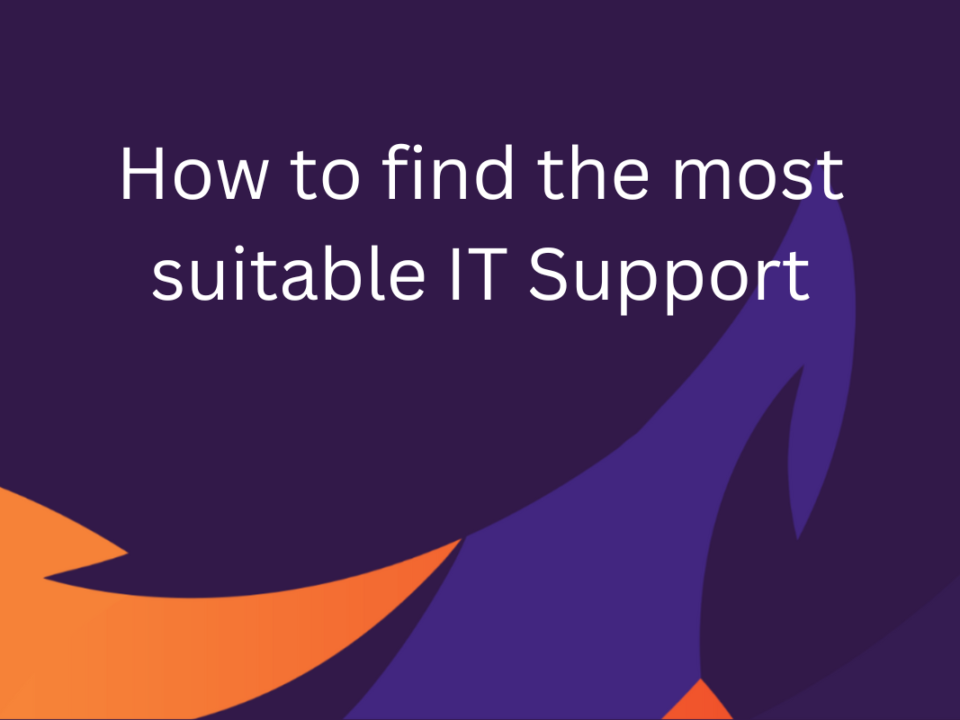How to organise and secure tech infrastructure post-pandemic
The best way to configure, maintain and protect IT has been perplexing smaller organisations for some years. Then came the COVID-19 crisis; out of the blue and leaving a massive lasting impact.
It has created a watershed moment for many businesses, as they now need to consider the best source of proactive IT support to equip them for what is widely referred to as the ‘new normal’.
Ripple effect of COVID-19
To say that the business landscape has shifted is an understatement. The list of changes is extensive and extends from major brands going under due to the financial strain, to SMEs working around the clock to meet opportunities that the pandemic threw into their path.
Cleaning supplies, sewing skills for cloth masks, PPE items and home-schooling resources are just some of the products that have enjoyed rapidly escalating demand. Also, any enterprise supplying groceries straight to homes has struggled to keep pace with orders, as have any delivery companies.
So, which camp do you fall into? Perhaps you will spend the coming months firefighting to stay afloat or looking for ways to cash in on new interest in niche products.
For other companies, the pandemic has changed the way to actually work day to day, rather than their product or service offering. The race is on to find new ways of introducing social distancing and advanced hygiene standards, particularly for front-facing businesses. Plus, many companies have supported home working during the lockdown and can now see excellent reasons to continue that post-pandemic.
The common denominator is improved IT
To cope with the stresses, strains and new opportunities created by COVID-19, technology is now more important than ever, but so is the mandate to keep it updated and secure.
This is largely due to the fact that consumers are even more inclined towards eCommerce, and B2B organisations have turned even more to digital communication and collaboration.
Put simply, how your company organises, upgrades and protects its IT dictates its agility and resilience.
Apart from security (more on that later) companies have two important tech priorities, which are not mutually exclusive.
One is to make sure IT systems are set up to support ever-greater remote working and a dispersed workforce, as well as an office layout that enables social distancing principles. This all needs to become sustainable business practice. For B2B enterprises, this also extends to creating a well-configured digital workplace that can engage constructively with clients to replace physical meetings.
The second priority for some companies is to make sure they have the IT systems in place to provide products and services in a way that cuts out physical contact. Devices and software that streamline production and supply – boosting direct to consumer provision – are needed more than ever before.
Help with robust network architecture
To survive and thrive, the investment in improved or re-configured IT needs to start immediately.
This will involve subcontracting IT services to enable companies to quickly and intuitively remodel their systems according to new priorities and working practices.
It could mean stepping up cloud migration, for example, to support more remote working, as well as providing a stronger IT helpdesk to underpin confidence and productivity within your dispersed workforce.
It will also require companies to explore multiple network control centres. As your company will increasingly depend on its IT if everything pivots on one location, your business health is at risk.
Having external IT support – round the clock and ready to step in at short notice – can provide an important safety net, as well as a competitive edge at the times of fiercest pressure on your sector.
Security concerns from home working
Those companies who temporarily shifted to remote working, the ones which started the shift pre-COVID-19, and the many companies seeking to continue the trend, all share a common problem.
The minute you decentralise your working systems and start sharing data across numerous sites, your cybersecurity risks grow exponentially.
Your IT architecture and protocols need to be tightened up to maintain data security throughout the changes and challenges of the coming months. This too may require you to bring in IT security experts – or IT security training – to effectively manage and mitigate risks.
Business continuity plans
If the pandemic taught us anything, it’s that you need to expect the unexpected!
For years, companies have been urged to create robust business continuity plans and crisis management procedures. How many companies were caught with their pants down when COVID-19 turned the world upside down?
Hopefully, a lesson learnt and new security planning measures are running alongside the development of an IT contingency plan. Are you 100% sure that data recovery is possible if the next business crisis you face puts your systems and information in jeopardy?
Next steps for post-pandemic IT
It’s a considerable list of things every company needs to put into place post-pandemic, including an external IT helpdesk service, IT consultancy to get your infrastructure up to scratch and improved data security and crisis planning.
However, one of the things you are least likely to do – following such a hugely unsettled and unsettling economic period – is to start splashing the cash! You need IT solutions that don’t stretch their working capital or revenue predictions.
This means any IT support services you recruit need to start from the ‘drawing board’. You need a company willing to get to know your business – its pains and potential gains – and provide an honest perspective on the steps ahead of you.
From this comes the confidence to make important decisions about your IT in the coming weeks and faith in your ongoing IT support to keep everything on track.
In case you haven’t already guessed, the best team for that job is Cara Technology.




